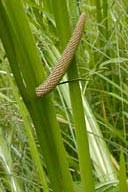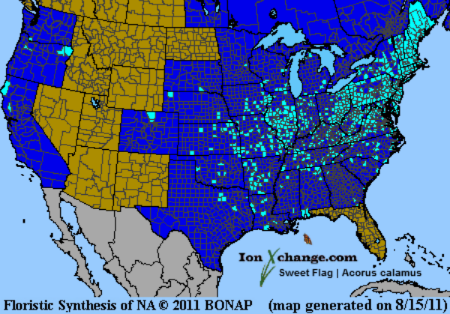 Loading... Please wait...
Loading... Please wait...- Home
- SEEDS
- SEED MIXES
- BUY PLANTS
- Info Request
-
Educational Videos
- Greenhouse Transplanting Demonstration
- Native Seed Cleaning demonstration at Ion Exchange Native Seed and Plant Nursery
- Attracting Butterflies
- Bidens - Bidens cernua Harvest Video
- Big Blue Stem Harvest
- Butterfly Milkweed Video
- Button Blazingstar - Liatris aspera Video
- Buttonbush - Cephalanthus occidentalis Video
- Canada Anemone - Anemone canadensis Harvest Video
- Cardinal Flower - Lobelia cardinalis Video
- Control Burn - Wildflower Field
- Cream Gentian - Gentiana flavida
- Culver's Root - Veronicastrum virginicum Video
- Cup Plant - Silphium perfoliatum Video
- Dormant Seeding | Planting
- Earthyman's Favorite Wildflowers Video
- Eco-Friendly Golf Course Seed Mix
- Floating Islands
- Fringed Loosestrife - Lysimachia ciliata Video
- Giant Yellow Hyssop - Agastache nepetoides Video
- Indiangrass - Sorghastrum nutans Video
- Iowa Prairie Partner Program
- Leadplant - Amorpha canescens (Potted) Video
- Meadow Blazingstar - Liatris ligulistylis
- Midland Shooting Stars - Dodecatheon meadii Video
- Native Plant Nursery Field Irrigation Experiment
- Nodding Onion - Allium cernuum Video
- Ohio spiderwort - Tradescantia ohiensis Video
- Old Man's Beard - Clematis virginiana blooms Video
- Oxeye Sunflower - Heliopsis helianthoides Video
- Prairie Spiderwort - Tradescantia bracteata
- Purple Coneflower - Echinacea purpurea Video
- Rain Garden or Water Garden Video
- Rattlesnake Master - Eryngium yuccifolium Video
- Riverbank Stabilization - Wetland Plants
- Rose Mallow - Hibiscus militaris Video
- Rosinweed - Silphium integrifolium Video
- Royal Catchfly - Silene regia
- Showy Tick Trefoil - Desmodium canadense Video
- Sneezeweed - Helenium autumnale Video
- Swamp Betony - Pedicularis lanceolata Video
- Swamp Milkweed - Asclepias incarnata Video
- Sweet Blackeyed Susan - Rudbeckia subtomentosa Video
- Tall Coreopsis - Coreopsis tripteris Video
- Urban Butterfly Garden
- Wild Bergamot - Monarda fistulosa Video
- Wild Geranium - Geranium maculatum Harvest
- Wild Goldenglow - Rudbeckia lanciniata Video
- Wild Petunia - Ruellia humilis Harvest Video
- Woodland Knotweed - Polygonum virginianum Video
- Yellow Coneflower - Ratibida pinnata Video
- Blog
- Resources
- Policies
Contact Us
Phone:
563-419-0837
or 563-535-7231
Email:
hbright@ionXchange.com
Browse Products
Add to Wish List
You Recently Viewed...
Our Newsletter
Product Description
Sweet Flag (Acorus Calamus) is an aromatic, colony-forming perennial 1 to 4 feet tall with leaves like a cattail. Flowers are very tightly bunched on a long, thin spadix. Grows at pond edges and in wet fields throughout the Midwest.
Araceae Family - Sweet Flag, Beewort, Bitter Pepper Root, Calamus, Calamus Root, Pine Root, Reed Acorus, Flag Root, Muskrat Root, Myrtle Grass, Myrtle Root, Pine Root, Sea Sedge, Drug Sweetflag, Sweet Cane, Sweet Cinnamon, Sweet Grass, Sweet Myrtle, Sweet Sedge, Sweet Root, Sweet Segg, Sweet Rush, Sweet Rush, and Sweet Calomel
Acorus from an ancient word of Latin origin meaning "aromatic plant" and calamus, an ancient word for "reed".
| Sun Exposure | Prairie |
| Soil Moisture | Wet, Wet Mesic |
| Bloom Time | Spring, Early Summer May, June July |
| Bloom Color | Green |
| Height | 2 feet |
| Wetland Code | OBL |
| Germ Code | C(60) |
| Seeds Per Packet | 300 |
| Seeds Per Ounce | 6,600 |
Native Americans chewed the root or made a tea from the dried root for treating gas, stomachaches, indigestion, heartburn, fevers, colds, and coughs; anti-spasmodic, anti-conversant, central nervous system depressant; in India it has been used for many years as an aphrodisiac. They also chewed the root to stave off thirst and as a stimulant on long journeys.
German studies showed the controlled dosages of the root helped lower serum cholesterol levels in rabbits.
In Appalachia, freshly cut leaves are still used as an insecticide.
The inner portions of the tender young shoots make a very tasty Spring salad. The Pennsylvania Dutch used the root to flavor pickles and the powdered root has been used to make cachets and scent perfumes.
Edible Uses:
The rhizome is candied and made into a sweetmeat. It can be peeled and washed to remove the bitterness and then eaten raw like a fruit. It makes a palatable vegetable when roasted and can also be used as a flavouring. Rich in starch, the root contains about 1% of an essential oil that is used as a food flavouring. The root also contains a bitter glycoside. Some caution is advised, see the notes on toxicity.
The dried and powdered rhizome has a spicy flavour and is used as a substitute for ginger, cinnamon and nutmeg.
The young and tender inflorescence is often eaten by children for its sweetness. Young leaves - cooked. The fresh leaves contain 0.078% oxalic acid. The leaves can be used to flavour custards in the same way as vanilla pods.
The inner portion of young stems is eaten raw. It makes a very palatable salad.
Medicinal Uses:
Sweet flag has a very long history of medicinal use in many herbal traditions. It is widely employed in modern herbal medicine as an aromatic stimulant and mild tonic. In Ayurveda it is highly valued as a rejuvenator for the brain and nervous system and as a remedy for digestive disorders. However, some care should be taken in its use since some forms of the plant might be carcinogenic - see the notes on toxicity for more information.
The root is anodyne, aphrodisiac, aromatic, carminative, diaphoretic, emmenagogue, expectorant, febrifuge, hallucinogenic, hypotensive, sedative, stimulant, stomachic, mildly tonic and vermifuge. It is used internally in the treatment of digestive complaints, bronchitis, sinusitis etc. It is said to have wonderfully tonic powers of stimulating and normalizing the appetite. In small doses it reduces stomach acidity whilst larger doses increase stomach secretions and it is, therefore, recommended in the treatment of anorexia nervosa. However if the dose is too large it will cause nausea and vomiting.
Sweet flag is also used externally to treat skin eruptions, rheumatic pains and neuralgia. An infusion of the root can bring about an abortion whilst chewing the root alleviates toothache. It is a folk remedy for arthritis, cancer, convulsions, diarrhoea, dyspepsia, epilepsy etc. Chewing the root is said to kill the taste for tobacco.
Roots 2 - 3 years old are used since older roots tend to become tough and hollow. They are harvested in late autumn or early spring and are dried for later use. The dry root loses 70% of its weight, but has an improved smell and taste. It does, however, deteriorate if stored for too long.
Caution is advised on the use of this root, especially in the form of the distilled essential oil, since large doses can cause mild hallucinations. See also the notes above on toxicity.
A homeopathic remedy is made from the roots. It is used in the treatment of flatulence, dyspepsia, anorexia and disorders of the gall bladder.
Warning! - Some species are thought to contain the carcinogen beta-asarone. Vapors from the roots do repel some insects. The root, when candied, was a long-time pioneer confection. It was boiled all day long, cut into small pieces, and then boiled again for a few more minutes in thick maple syrup. This "candy" was used most often used to aid digestion, but also used to serve as a tonic and physic.













